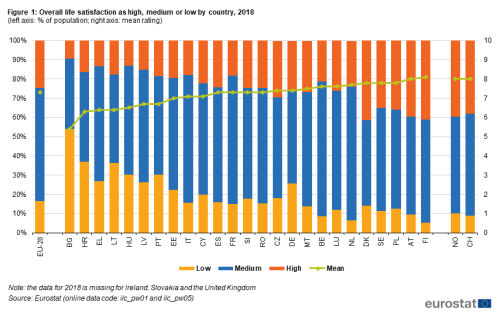Archive:Employment - quarterly statistics
Data extracted in Month YYYY
Planned article update: Month YYYY
Highlights
Temporary contracts are less used in the 2020q1 compared to 2019Q4
Employed people are undoubtedly impacted by the recent sanitary crisis due to the COVID-19. Shortly after and as first response, measures like short-time work and financial support to enterprises were implemented in order to keep at bay the expected negative developments on employment and businesses. As regards the labour market, the goal was mainly to maintain employed people at work. However, even if mass dismissals could have been constrained, hiring might have been affected by the pessimistic expectations: enterprises ready to effectively recruit could have withdraw their vacancies, reconsider its plans or put off the recruitment process. Other people like people in probationary periods or trainees might have, in normal times, integrate employment in a longer term but due to the COVID-19 downturn, experienced a job loss. These can be among others mechanisms what can be anticipated as regards employment. Forward, enterprises might encounter long-term difficulties due to change in the the economic activity and lay off in a larger extent.
This article focuses on the changes in the employment observed along the economic crisis based on the quarterly LFS data. It aims at showing the last developments in the employment of young, mid-age and older people as well as it includes an analysis by gender and level of education. Specific point is dedicated to the evolution of part-time and temporary contracts.
The current version reports on the situation in the first quarter 2020 that may eventually include the very early stages of the economic downturn. This means that the impact of the lock-down, that took place in most of EU Member States in the second quarter 2020, will be encompassed in the next update of the article.
Full article
Title
Text
Source data for tables and graphs
Data sources
<description of data sources, survey and data availability (completeness, recency) and limitations>
Context
<context of data collection and statistical results: policy background, uses of data>
Direct access to
Main tables
- Title(s) of second level folder (if any)
- Title(s) of third level folder (if any)
Database
- Title(s) of second level folder (if any)
- Title(s) of third level folder (if any)
Dedicated section
Publications
Publications in Statistics Explained (either online publications or Statistical articles) should be in 'See also' above
Methodology
<link to ESMS file, methodological publications, survey manuals, etc.>
- Crime and criminal justice (ESMS metadata file — crim_esms)
- Title of the publication
Legislation
- Use Eur-Lex icon on the ribbon tool at the top of the statistical article to enter the year and reference of your regulation or directive.
- See example of what should be issued hereafter
- Regulation (EU) No 1013/2016
Visualisations
- Regional Statistics Illustrated - select statistical domain 'xxx' (= Agriculture, Economy, Education, Health, Information society, Labour market, Population, Science and technology, Tourism or Transport) (top right)
External links
Notes
<footnote text will be automatically inserted if reference tags are used in article content text (use reference icon on ribbon)>
[[Category:<Subtheme category name(s)>|Name of the statistical article]] [[Category:<Statistical article>|Name of the statistical article]]
Delete [[Category:Model|]] below (and this line as well) before saving!
